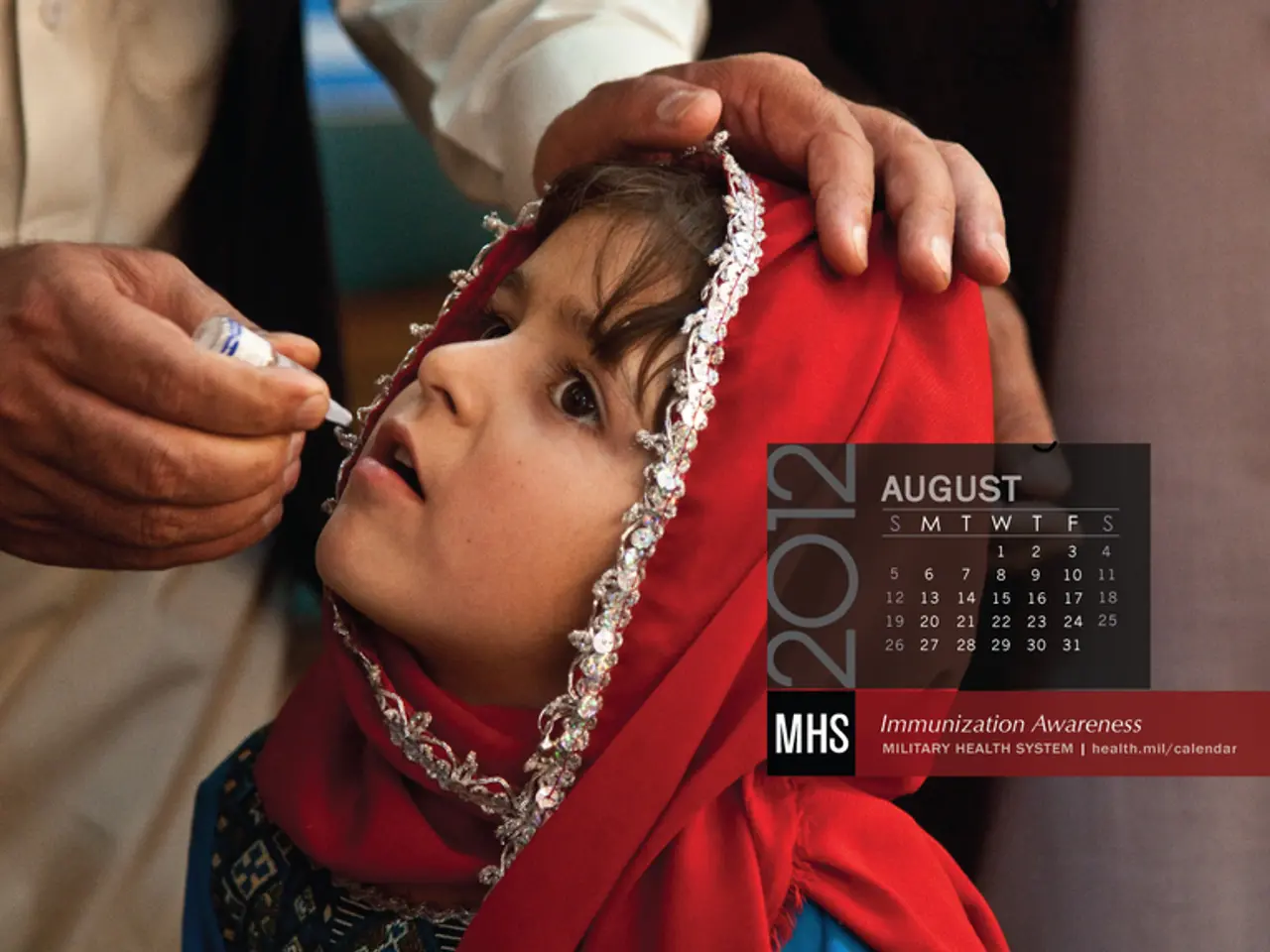vaccine administration for children saw an additional decline during the academic year of 2024-2025, according to the Centers for Disease Control and Prevention (CDC).
Rising Measles Cases in the U.S.: A Consequence of Declining Vaccination Rates
A concerning trend is emerging in the United States as measles cases and outbreaks continue to rise, and vaccination rates among children are dropping.
Measles, a highly contagious disease, can potentially lead to 12 to 18 more cases among unvaccinated people [1]. The Centers for Disease Control and Prevention (CDC) has reported that as of the 2024-2025 school year, over three-quarters of U.S. states had MMR vaccination rates below the 95% target needed for herd immunity, with 16 states reporting rates below 90% [1].
This drop in vaccination rates has been observed for not only the MMR vaccine but also for DTaP, varicella, and polio vaccines over the past few years [2]. As a result, the U.S. has already had 1,333 confirmed measles cases and 29 measles outbreaks in 2025 [3].
The largest outbreak in 2025 occurred in Texas, where vaccination coverage among kindergarteners was only 77%, well below the herd immunity threshold [4]. This outbreak spread to other states and across the border to Mexico.
Studies show that a decline in vaccination rates due to factors including vaccine hesitancy and pandemic-related disruptions in routine immunizations have left millions of U.S. children vulnerable to measles [2]. Public health experts warn that if vaccination rates stay around 90% or below, measles could become endemic in the U.S. again, leading to more frequent and larger outbreaks [4].
In addition to the MMR vaccine, coverage for varicella and DTaP vaccines has also decreased. The percentage of kids who got two doses of the DTaP and varicella vaccines has decreased, with coverage numbers for the DTaP vaccine falling from 94.9% in 2019-2020 to 92.1% this past school year [5].
The U.S. has already had 138,000 children receive exemptions from vaccinations for kindergarteners in the 2024-2025 school year [6]. Exemption rates have increased in 36 states and the District of Columbia, with Idaho having the highest rate of exemptions at a whopping 15.4% [6].
It's important to note that each person's decision to get vaccinated affects everyone else's risk of getting the disease. The CDC's website still presents vaccination as a personal choice, but the reality is that unvaccinated individuals can pose a threat to those who cannot receive vaccinations due to health reasons or infants who are too young to be vaccinated [7].
In conclusion, the correlation between declining childhood vaccination rates and the increase in measles cases in the U.S. is clear. Maintaining high vaccination coverage is crucial to prevent outbreaks and ensure the health and safety of our communities.
References:
- CDC
- CDC
- CDC
- NPR
- CDC
- NPR
- CDC
- The decline in childhood vaccination rates, particularly for the MMR vaccine, has been linked to a rise in measles cases and outbreaks, as reported by the Centers for Disease Control and Prevention (CDC).
- Supporting science underscores the importance of vaccination in health-and-wellness, as it helps prevent the spread of infectious diseases like measles, which can potentially lead to more cases among unvaccinated individuals.




